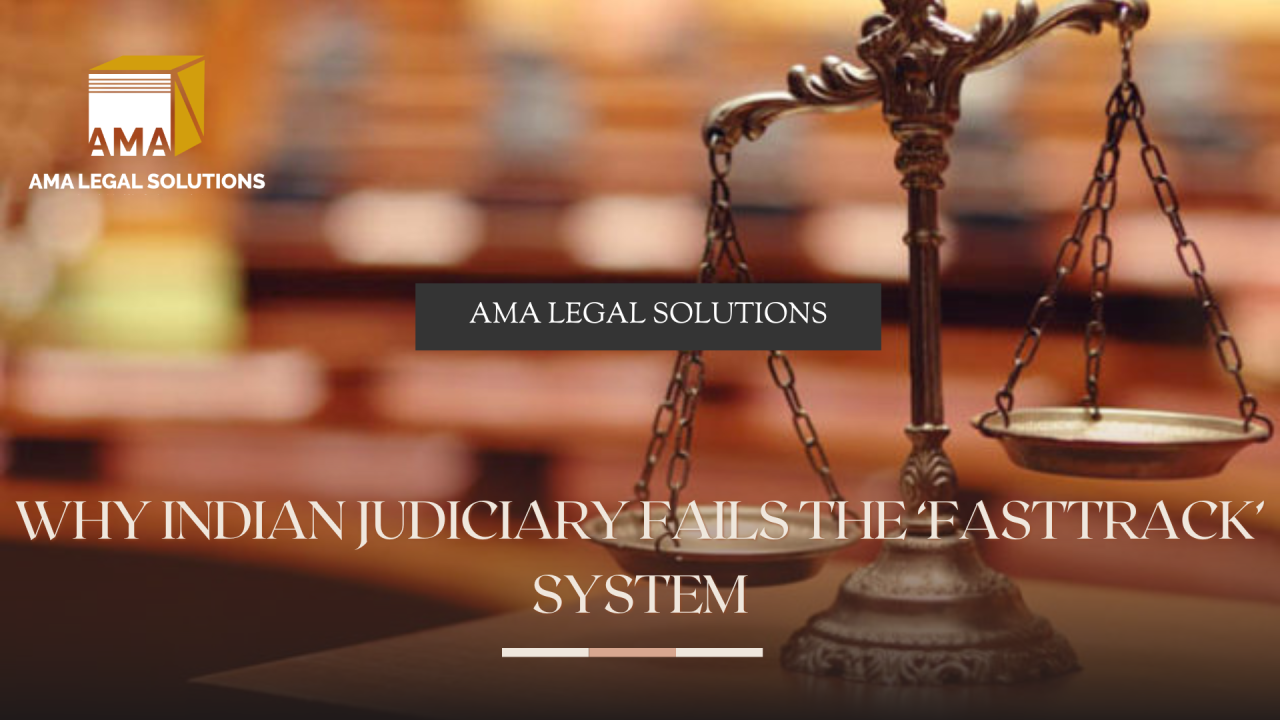
Analyzing the Failures of India’s Fast-Track Judicial System: Challenges, Solutions, and Perspectives
History
The Supreme Court in the year 1986 realized the need for fast-track courts in INDIA. The 11th Finance Commission recommended in 2000 that 1,7234 fast track courts be established in order to guarantee the prompt resolution of matters that were pending in inferior courts. This recommendation led to the creation of fast-track courts. The Finance Ministry approved a “special problem and upgradation grant” of Rs. 502.90 crores to the states based on this request. As of the latest updates, there are 848 FTCs that are functional across the country (October, 2023).
The FTC’s are ad-hoc institution set up specially for the cases of heinous crimes; civil cases related to women, children, senior citizens, HIV/AIDS etc. and property-related cases pending for more than 5 years.
The particular high court in question has to select the judges for these courts, with candidates mostly coming from three pools:
- By promoting the eligible judges from the existing officials.
- Retired judges of the high court
- Member of the respective bar associations.
Background and Legislative Basis
- The decision to establish fast-track courts was prompted by the passage of the Criminal Law (Amendment) Act in 2018.
- The original plan was to set up 1,023 fast-track courts as a response to the need for expeditious justice in cases of sexual offences.
- The FTSC Scheme aims to expedite the judicial process for cases related to sexual offences, particularly rape, and those falling under the Protection of Children from Sexual Offences (POCSO) Act.
- The scheme was centrally sponsored and launched in 2019.
Why fast track courts are failing ?
As the noted litigator of the Madras High Court said, “We cannot decrease the backlog with FTCs. It is far more complicated. If you are looking at the overall caseload in India then the government is the largest litigant and the governments don’t settle matters easily unlike private cases.
The term fast-track itself seems like a poor depiction. How does one single out certain categories over the others? For example, you can say that crimes against women can be under FTC but why not murder? So when we start using terms like fast-track courts, then we accept that the justice delivery system is extremely slow. It has failed us but at the same time not sure whether these courts deliver the justice system well and there is nothing clear on that”.
The term fast track is only a false appearance given to the courts to trick the public into thinking that these courts provide a speedy delivery of justice. But it is not possible as they follow the same procedure as that of the regular courts and the trials happen in the same manner.
Disadvantages of fast track courts(FTC’s)
- By rushing through the hearings or omitting some procedural stages, they could jeopardise the integrity of the legal system and the administration of justice.
- They could place unnecessary strain on the judges, solicitors, and witnesses, who have to handle a lot of cases in a short amount of time.
- They might infringe upon the rights of the accused, who might not have enough time to organise a defence or file an appeal of the decision.
- They might establish a separate legal system that is inconsistent or non-uniform with the established courts.
What changes can be made
Trials in fast-track courts need to be finished on time in order for them to be more effective. To solve this, a dual approach that changes procedures while enhancing these courts’ human capability with committed judges and capable staff is required.
“Trials are not heard on a regular basis; a judge/judicial officer, on average, has to hear not just cases related to rape and murder but also remand and bail applications which take up their majority of their time.” Fast-track courts must have dedicated judges in order for cases to be heard on a regular basis.
A judge and seven employees would solely handle the resolution of rape cases and issues pertaining to the POCSO Act, according to a 2019 amendment to the POCSO Act. No current court employee or officer will be given extra responsibility for FTSCs.
We can take reference from the United Kingdom, “evidence is put together beforehand and presented together rather than one at a time; a time table is set and the evidence to be submitted is listed”
Conclusion
Fast-track court is a special type of court that is established to expedite the judicial process and deliver justice in a timely manner. The fast-track courts are set up for cases that involve serious crimes, such as rape, murder, terrorism, etc., or cases that have a large public interest, such as corruption, fraud, etc. Their purpose is to decrease the backlog of unresolved cases and enhance the effectiveness of the legal system. They prevent the criminals from committing new crimes and offer victims and their families with prompt justice. Although fast-track courts can be a successful tool in combating judicial backlogs and delays, they additionally create some difficulties and threats to human rights and the rule of law. As a result, they need to be given cautiously and carefully, and only in situations where a prompt trial is actually necessary. Fast-track courts are meant to be used in addition to regular courts, not as a replacement for them. The ultimate objective should be to guarantee sufficient infrastructure, staffing, funding, and changes in order to enhance the judicial system’s overall performance and functionality. Legislation should also present a different procedure for the working of the trials in the fast track courts because the overlapping of the procedure between the regular court and the fast track courts is not providing any help with the objective with which the FTC’s were established rather it is destroying the objective.

